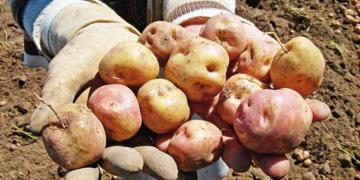Argentina (XXVI Onion Seminar): The planted area in the country increased by 15%
At the 26th Onion Seminar held in Viedma and Ascasubi, organized by INTA, the current state of the sector was discussed, with emphasis on the influence of the Brazilian market.

The regional onion sector is undergoing a period of analysis, with particular emphasis on the performance of the Brazilian market. At the 26th Mercosur Onion Seminar organized by INTA (National Institute of Agricultural Technology), held on March 21 and 22 in Viedma and Ascasubi, specialists, producers, and businesspeople from the sector analyzed onion production in Argentina and, among other topics, its relationship with the Brazilian market.
Key topics were discussed, such as planted area, the impact of drip irrigation, and international trade prospects. Global trends in storage and marketing of a product where more than 70% of the varieties selected for commercial production come from genetic improvements developed at INTA were presented.
One of the event’s main topics was a review of the area planted in Brazil , which presents an abundant supply, although the quality of the product varies due to storage issues. It was confirmed that most Brazilian producing regions have maintained or increased their planted area, with the exception of the Northeast, due to financial difficulties. This region has the capacity to produce onions year-round and competes with Argentina starting in October, a time when the domestic product must be well preserved to enter the market in optimal condition.
A detailed analysis of Brazilian onion-producing regions, from Santa Catarina to Pernambuco, showed that competition for Argentina varies depending on the season and destination region. While an oversupply was initially expected, climatic and logistical factors could influence demand for Argentine onions in Brazil.
Although an oversupply was initially expected, climatic and logistical factors could influence demand for Argentine onions in Brazil.
In Argentina, the planted area also increased by 15%. This does not mean a drop in prices, as the key remains supply from Brazil. If weather conditions there are favorable, the need to import Argentine onions could decrease, impacting the commercial value of the domestic product.
In Río Negro, for example, the planted area reached 8,000 hectares, with yield variations depending on the technology used. In Santiago del Estero and Mendoza, however, production is focused on the domestic market, with less impact on exports.
Regarding irrigation technology, one of the keynote lectures highlighted the importance of drip irrigation as a tool for increasing water efficiency and improving yields. In the Lower Negro River Valley, Guardia Mitre, and Ascasubi regions, this technology is being progressively implemented, allowing for better use of water resources and reducing costs in the long term. "Although gravity irrigation still predominates in some regions, producers who have incorporated drip irrigation have achieved yields of up to 120 tons per hectare, compared to the 40 to 60 tons obtained using traditional methods," explained German Cariac, director of the INTA Lower Negro River Valley experimental station.
In Río Negro, for example, the planted area reached 8,000 hectares, with yield variations depending on the technology used.
Another topic discussed was onion storage and preservation. Various technologies used in Europe were presented, ranging from rudimentary structures to controlled atmosphere storage systems. These innovations improve product quality and extend its shelf life, a key factor for export.
On Friday the 21st, attendees participated in a field visit to the IDEVI area, where they were able to observe mechanical harvesting machinery in operation.
The event was attended by producers and specialists from Peru, Mexico, and Chile. In these markets, onions have specific characteristics: in Peru, production is highly oriented toward export to the United States; in Mexico, varieties adapted to both the U.S. market and domestic consumption are grown, with onions with a more pungent flavor; and in Chile, drip irrigation is widely implemented, enabling stable and efficient production.
"Producers who have incorporated drip irrigation have achieved yields of up to 120 tons per hectare."
Finally, international onion trade was addressed from the perspective of the dynamics of the European market and its influence on African countries. The Netherlands, Spain, and Germany are key players in this sector, consolidating their position as major exporters and regulators of global trade.
The event concluded with a presentation on onion fertilization, which highlighted the importance of balancing nitrogen supply with other essential nutrients such as potassium and boron. This nutritional approach is essential for optimizing yields and product quality.
In short, the event provided an in-depth analysis of the onion market, from production and storage to international marketing. Climate conditions, the adoption of technologies such as drip irrigation, and competition with Brazil are determining factors in the sector’s evolution in the coming months.
Fuente:






